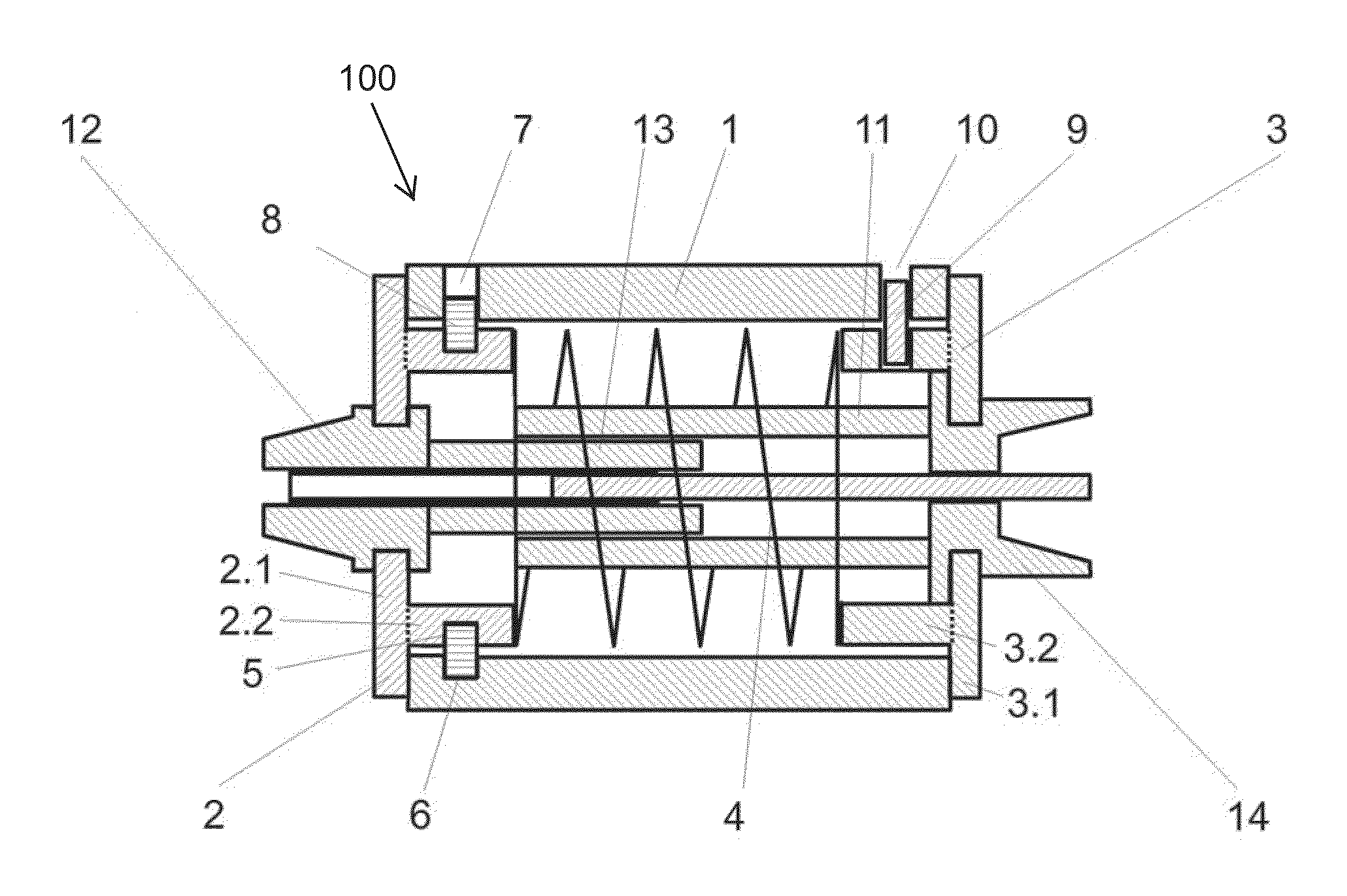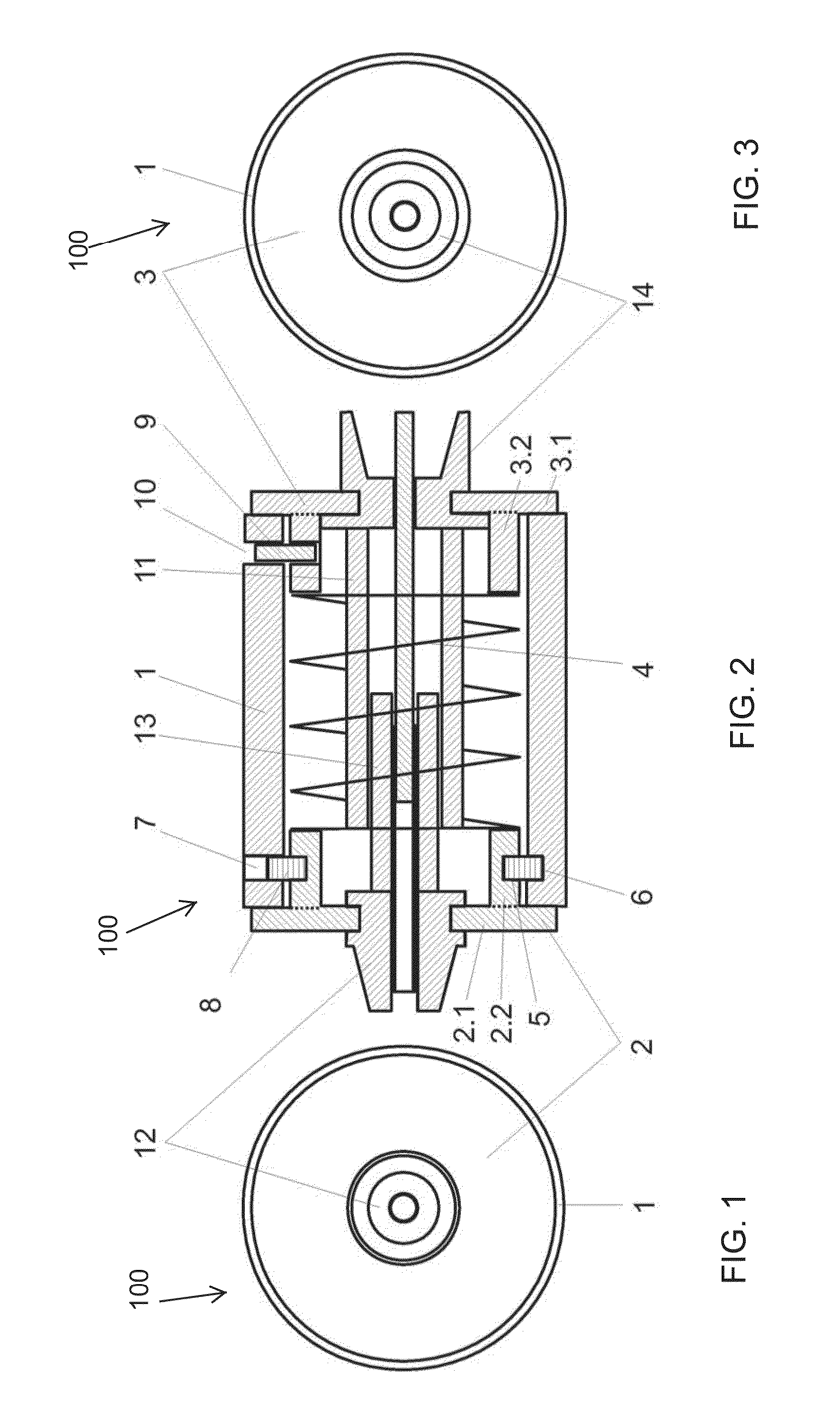Electromechanical Excess Temperature Protection Element
a technology of excess temperature protection and electromechanical elements, applied in the direction of electrical apparatus, emergency protection arrangements for automatic disconnection, heating/cooling contact switches, etc., can solve the problems of limited safety precautions for photovoltaic systems in the open field, posed acute risk to emergency personnel or persons involved in accidents, and prone to hazards. , to achieve the effect of easy integration into the electrical circui
- Summary
- Abstract
- Description
- Claims
- Application Information
AI Technical Summary
Benefits of technology
Problems solved by technology
Method used
Image
Examples
Embodiment Construction
[0030]The present invention will now be described more fully in detail with reference to the accompanying drawings, in which the preferred embodiments of the invention are shown. This invention should not, however, be construed as limited to the embodiments set forth herein; rather, they are provided so that this disclosure will be complete and will fully convey the scope of the invention to those skilled in the art.
[0031]FIGS. 1-3 illustrate an excess temperature protection element 100 according to the invention. The excess temperature protection element comprises a housing 1, the end faces of which are closed by means of a releasable cover plate 2 and a fixed cover plate 3. The housing is constructed as a cylindrical tube with open end faces. The two cover plates 2, 3 have a first section 2.1, 3.1, respectively. Each first section completely covers the open end face of the housing 1. Extending from the first sections 2.1 and 3.1 are second sections or sidewalls 2.2 and 3.2, respec...
PUM
 Login to View More
Login to View More Abstract
Description
Claims
Application Information
 Login to View More
Login to View More - R&D
- Intellectual Property
- Life Sciences
- Materials
- Tech Scout
- Unparalleled Data Quality
- Higher Quality Content
- 60% Fewer Hallucinations
Browse by: Latest US Patents, China's latest patents, Technical Efficacy Thesaurus, Application Domain, Technology Topic, Popular Technical Reports.
© 2025 PatSnap. All rights reserved.Legal|Privacy policy|Modern Slavery Act Transparency Statement|Sitemap|About US| Contact US: help@patsnap.com


